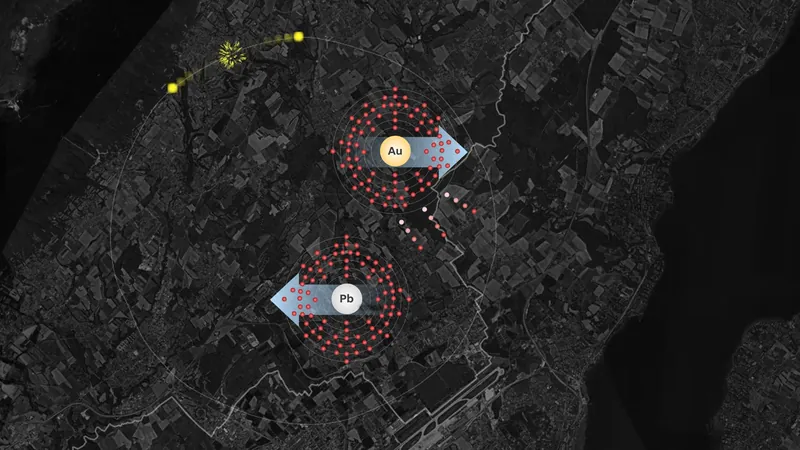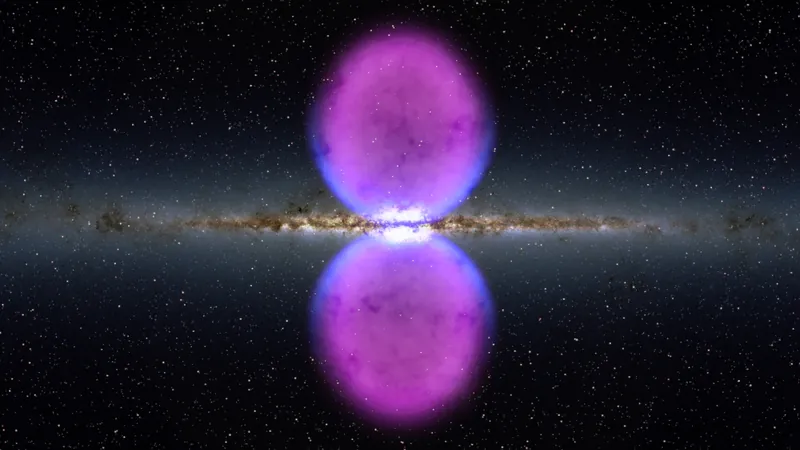
Unlocking Alchemy: How CERN's Large Hadron Collider Briefly Transformed Lead into Gold!
2025-05-16
Author: Li
For centuries, alchemists chased the elusive dream of turning lead into gold, but the scientists at CERN's Large Hadron Collider achieved it—with an astonishing twist that lasted just a microsecond!
Why lead? This common metal was a favorite of alchemists due to its abundance and its similar atomic characteristics to gold. Lead boasts 82 protons in its atomic nucleus, whereas gold has only 79.
At CERN, the world's most powerful particle accelerator, researchers employed cutting-edge techniques to collide lead ions at near the speed of light. While some ions collided perfectly, others flirted dangerously close.
In these nearly-perfect hits, magic happened—lead atoms shed three protons during a spectacular show of physics, morphing into gold atoms. But hold your horses; this transformation was fleeting! An estimated 86 billion gold nuclei were produced across four groundbreaking experiments from 2015 to 2018, each weighing in at a minuscule 29 trillionths of a gram. Just think—these gold atoms glittered into existence only to dissipate within a microsecond!
The Science Behind the Transformation
How did CERN pull off this miraculous feat? When lead ions zoom past each other at staggering speeds, they create an intense electromagnetic field. In those near-collision encounters, a phenomenon known as electromagnetic dissociation occurs. This causes a lead nucleus to vibrate and eject three protons, thus creating a temporary gold atom.
Yet, don't get too excited—these unstable, high-speed gold atoms existed for a mere microsecond before they either smashed into apparatus or split apart into other particles.
What is the Large Hadron Collider?
The Large Hadron Collider (LHC) is a scientific marvel, spanning nearly 17 miles of superconducting magnets and intricate machinery buried 575 feet beneath the surface near Geneva. Constructed over 10 years and completed in 2008, the LHC leads the charge in high-energy particle physics.
Perhaps the most awe-inspiring achievement of the LHC was the landmark discovery of the Higgs boson in 2012. This fundamental particle helped explain how matter gains mass!
By colliding high-speed proton and ion beams, the LHC allows researchers to explore the very fabric of our universe, effectively recreating conditions known to have existed just after the Big Bang.

 Brasil (PT)
Brasil (PT)
 Canada (EN)
Canada (EN)
 Chile (ES)
Chile (ES)
 Česko (CS)
Česko (CS)
 대한민국 (KO)
대한민국 (KO)
 España (ES)
España (ES)
 France (FR)
France (FR)
 Hong Kong (EN)
Hong Kong (EN)
 Italia (IT)
Italia (IT)
 日本 (JA)
日本 (JA)
 Magyarország (HU)
Magyarország (HU)
 Norge (NO)
Norge (NO)
 Polska (PL)
Polska (PL)
 Schweiz (DE)
Schweiz (DE)
 Singapore (EN)
Singapore (EN)
 Sverige (SV)
Sverige (SV)
 Suomi (FI)
Suomi (FI)
 Türkiye (TR)
Türkiye (TR)
 الإمارات العربية المتحدة (AR)
الإمارات العربية المتحدة (AR)